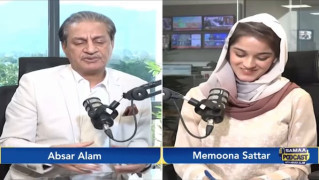Pakistani-Baloch
Banned
In January 2015, the price of petrol in Pakistan was Rs70.29 per litre. A year later, in January 2016, the price of petrol in Pakistan had gone up to Rs76.26 per litre – an annual increase of 8.5 percent. In January 2015, the OPEC basket price stood at $44.70 a barrel. A year later, in January 2016, the OPEC basket price had gone down to $25 a barrel; a decline of 44 percent.
In 2008, the Ministry of Petroleum and Natural Resources told us that the government was subsidising petroleum products to the tune of Rs30 billion a month. The government further said that the World Bank has given the government a deadline of end-2008 to withdraw all subsides on petroleum products. Lo and behold, all subsidies on petroleum products were withdrawn by end-2008 and we were told that from now on Pakistani prices shall be directly linked to the prices in the international market.
For the record, in the past one year the OPEC basket price is down a wholesome 44 percent. For the record, in the past one year the price in Pakistan has gone up 8.5 percent. Where has the 52.5 percent differential gone?
In 2014, Pakistanis consumed some 434,000 barrels a day. In 2014, when the OPEC basket price was $96.29 a barrel, Pakistanis consumed $15 billion worth of oil. In 2016, Pakistanis consumed more or less 434,000 barrels a day. By early 2016, the OPEC basket price had fallen to $25 and, as a consequence, the value of oil consumed by Pakistanis had gone down to $4 billion. For the record, the difference in value between 2014 and 2016 is a whopping $11 billion. Where has $11 billion gone?
How much is $11 billion? Well, $11 billion is the equivalent of Rs6,000 for every man, woman and child in this country. Well, $11 billion is the equivalent of Rs42,000 for every Pakistani family. Imagine if each and every Pakistani family was given a cash grant of Rs42,000. Imagine, with a multiplier effect, the positive impact of such a cash grant could be between $50 billion to $80 billion.
The fact is that there has been a $11 billion bonanza. The question is whether the government should spend it as per its wishes or let the private sector make spending decisions. There’s almost a consensus within economists that “government spending distorts resource allocation”. And that “government spending is a less effective way to deliver services (this is referred to as the ‘inefficiency cost’)”. And that when “individuals use other people’s money” they become reckless. And that “government spending inhibits innovation”.
Economic history and empirical evidence stand in favour of smaller governments. According to Daniel Mitchell, senior fellow at the Cato Institute, “Controlling federal spending is particularly important because of globalization. Today, it is becoming increasingly easy for jobs and capital to migrate from one nation to another. This means that the reward for good policy is greater than ever before, but it also means that the penalty for bad policy is greater than ever before.”
The writer is a columnist based in Islamabad.
- See more at: http://www.thenews.com.pk/print/91687-Where-has-11-billion-gone#sthash.v0035FP5.dpuf
In 2008, the Ministry of Petroleum and Natural Resources told us that the government was subsidising petroleum products to the tune of Rs30 billion a month. The government further said that the World Bank has given the government a deadline of end-2008 to withdraw all subsides on petroleum products. Lo and behold, all subsidies on petroleum products were withdrawn by end-2008 and we were told that from now on Pakistani prices shall be directly linked to the prices in the international market.
For the record, in the past one year the OPEC basket price is down a wholesome 44 percent. For the record, in the past one year the price in Pakistan has gone up 8.5 percent. Where has the 52.5 percent differential gone?
In 2014, Pakistanis consumed some 434,000 barrels a day. In 2014, when the OPEC basket price was $96.29 a barrel, Pakistanis consumed $15 billion worth of oil. In 2016, Pakistanis consumed more or less 434,000 barrels a day. By early 2016, the OPEC basket price had fallen to $25 and, as a consequence, the value of oil consumed by Pakistanis had gone down to $4 billion. For the record, the difference in value between 2014 and 2016 is a whopping $11 billion. Where has $11 billion gone?
How much is $11 billion? Well, $11 billion is the equivalent of Rs6,000 for every man, woman and child in this country. Well, $11 billion is the equivalent of Rs42,000 for every Pakistani family. Imagine if each and every Pakistani family was given a cash grant of Rs42,000. Imagine, with a multiplier effect, the positive impact of such a cash grant could be between $50 billion to $80 billion.
The fact is that there has been a $11 billion bonanza. The question is whether the government should spend it as per its wishes or let the private sector make spending decisions. There’s almost a consensus within economists that “government spending distorts resource allocation”. And that “government spending is a less effective way to deliver services (this is referred to as the ‘inefficiency cost’)”. And that when “individuals use other people’s money” they become reckless. And that “government spending inhibits innovation”.
Economic history and empirical evidence stand in favour of smaller governments. According to Daniel Mitchell, senior fellow at the Cato Institute, “Controlling federal spending is particularly important because of globalization. Today, it is becoming increasingly easy for jobs and capital to migrate from one nation to another. This means that the reward for good policy is greater than ever before, but it also means that the penalty for bad policy is greater than ever before.”
The writer is a columnist based in Islamabad.
- See more at: http://www.thenews.com.pk/print/91687-Where-has-11-billion-gone#sthash.v0035FP5.dpuf
- Featured Thumbs
- http://www.fotogallery.in/news/2015/may15/petrol.jpg
Last edited by a moderator:
























